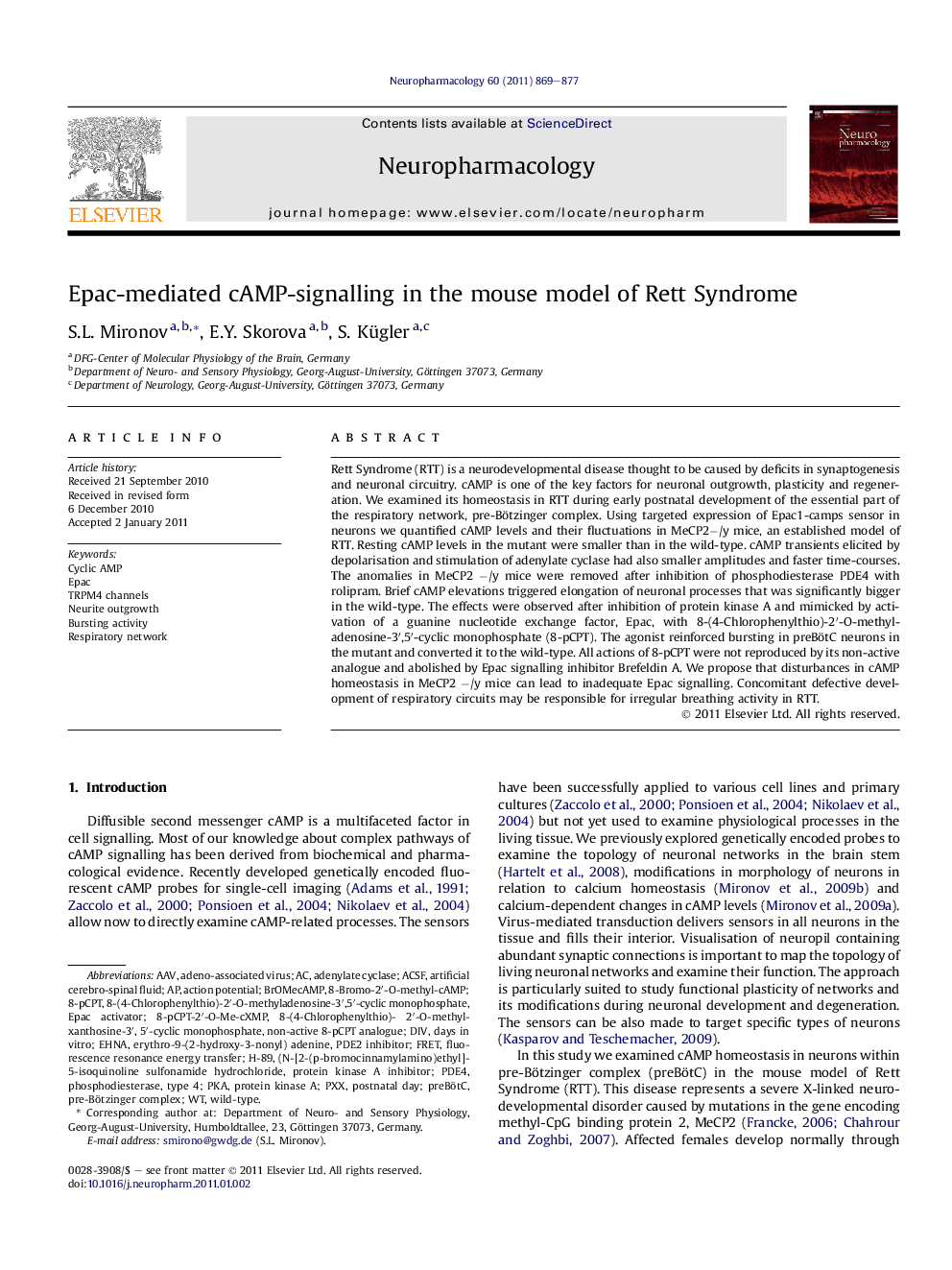| Article ID | Journal | Published Year | Pages | File Type |
|---|---|---|---|---|
| 2493974 | Neuropharmacology | 2011 | 9 Pages |
Rett Syndrome (RTT) is a neurodevelopmental disease thought to be caused by deficits in synaptogenesis and neuronal circuitry. cAMP is one of the key factors for neuronal outgrowth, plasticity and regeneration. We examined its homeostasis in RTT during early postnatal development of the essential part of the respiratory network, pre-Bötzinger complex. Using targeted expression of Epac1-camps sensor in neurons we quantified cAMP levels and their fluctuations in MeCP2−/y mice, an established model of RTT. Resting cAMP levels in the mutant were smaller than in the wild-type. cAMP transients elicited by depolarisation and stimulation of adenylate cyclase had also smaller amplitudes and faster time-courses. The anomalies in MeCP2 −/y mice were removed after inhibition of phosphodiesterase PDE4 with rolipram. Brief cAMP elevations triggered elongation of neuronal processes that was significantly bigger in the wild-type. The effects were observed after inhibition of protein kinase A and mimicked by activation of a guanine nucleotide exchange factor, Epac, with 8-(4-Chlorophenylthio)-2′-O-methyladenosine-3′,5′-cyclic monophosphate (8-pCPT). The agonist reinforced bursting in preBötC neurons in the mutant and converted it to the wild-type. All actions of 8-pCPT were not reproduced by its non-active analogue and abolished by Epac signalling inhibitor Brefeldin A. We propose that disturbances in cAMP homeostasis in MeCP2 −/y mice can lead to inadequate Epac signalling. Concomitant defective development of respiratory circuits may be responsible for irregular breathing activity in RTT.
► In this study we examine cAMP signalling in preBötC neurons in the mouse Rett model. ► We find lower cAMP levels due to enhanced PDE4 activity and Epac-mediated neurite outgrowth. ► We conclude that PDE4 and Epac are important in Rett Syndrome that can have therapeutic value.
